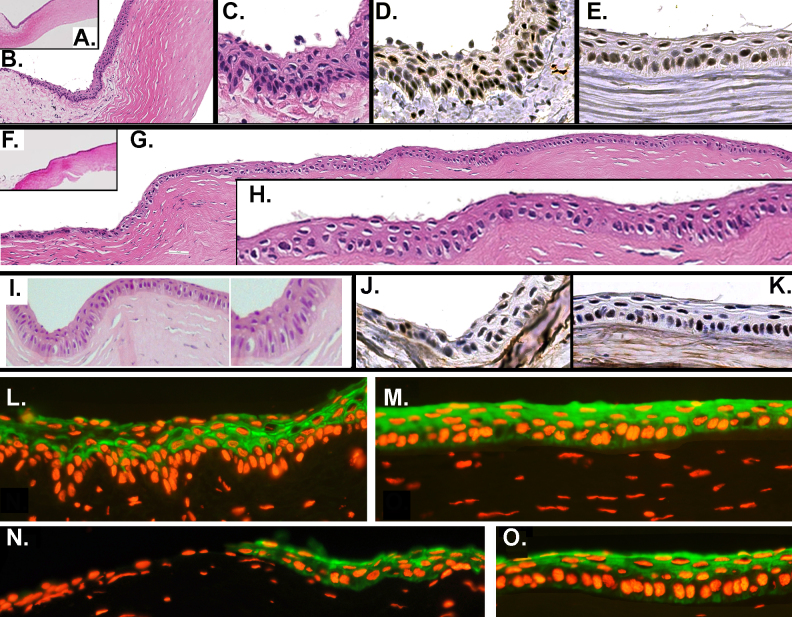Figure 5.
Histological and immunochemical details of the limbal and corneal zone of the control ocular surface and ocular surfaces grafted with primary outgrowths following radical limbal excision and corneal epithelial removal. A–E, L, and M: Donor cornea. The area selected was not subjected to surgical biopsy excision. A–C: Hematoxylin and eosin (H&E) stain at three magnifications. Note the loose stroma defining the limbal papilla. D and E: p63 stain of the limbal and central corneal zone. Note that p63 is strongly expressed in the nuclei of most cells in both zones, including some suprabasal nuclei. L and M: Krt3 stain in the limbus and the central cornea. Note the pronounced limbal rete ridge appearance in the limbus and the absence of Krt3 in the basal cell layer there. F–K, N, and O: Ocular surface grafted with a primary-generation outgrowth at 6 months post-surgery. F–H: H&E stain at different magnifications in two corneas. Note the absence of a limbal papilla and rete ridges, multiple zones of engrossed epithelium with perpendicular elongated cells within the peripheral area, and the normal appearance of the central cornea (K). L and M: p63 stain of peripheral and central cornea. As in the donor eye, there is profuse expression of p63 throughout the cornea. N and O: Krt3 staining of the peripheral and central corneal zones. Note the absence of Krt3-negative cells at the conjunctival–corneal junction.

